To give vent to pent-up minds of the common people
Mayor Kweon of Andong accents
increased cooperation, exchange
between Korea, outside world
in culture
At Andong Mask Dance Drama Festival
largest among all cultural festivals in Korea
By Staff Reporter Won Hwi and Photo Journalist Rico Weiske
Thousands of people attending the opening ceremony of the ten-day Andong Mask Dance Drama Festival in the Andong City some 170 miles southeast of Seoul on Sept. 29, 2017, were completely overwhelmed by over a hundred young men and women from a dozens of countries presenting their dances in colorful costumes representing their countries.
Rarely has any other city in the Republic of Korea offered such an international costume extravaganza presented by performing art troupe representatives and members from so many different countries of the world.
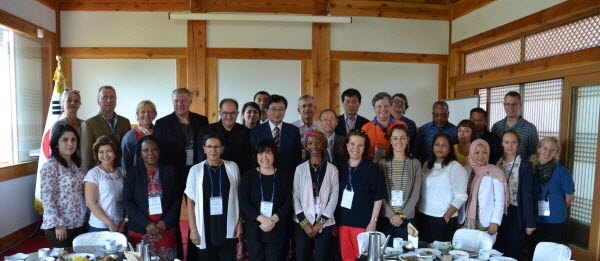
Speaking to the meeting, Mayor Kweon Young-sae of the Andong City, concurrently chairman of the Andong Festival Tourism Foundation, said, “After the rite of passage that was the 20th anniversary of the Mask Dance Festival, we have endeavored to bring a more mature and distinguished program for this year.”
Then he stated, “Under the theme of ‘Wish of Homo Festivus’, this year’s Festival aims to bring out the true Homo Festivus within us to express its instinctive search for joy in an explosive series of emotions at the edge of normality and strangeness, at the edge of reason and emotion.” (See excerpts from his speech toward the end of this article.)

This year, the Andong Mask Dance Drama Festival was attended by many ambassadors and other senior members of the Seoul Diplomatic Corps in a two-day tour program organized by The Korea Post media at the request of Mayor Kweon Young-sae of the Andong City.
Among them were Ambassadors Petar Andonov of Bulgaria, Milan Lajciak of Slovakia, Gonzalo Ortiz of Spain, Luis Fernando de Andrade Serra of Brazil and Mihai Ciompec of Romania (mostly accompanied by madams). Ambassadors of Viet Nam and Cote d’Ivoire were represented, respectively, by Mrs. Lan-Hinh Tran and Mrs. Sarah Bile. There were many other senior diplomats with their spouses, some even with their children. (See list of visiting members of the SDC at the end of this report.)

In advance of their attendance at the opening ceremony, the visiting ambassadors and other senior diplomats with their spouses were invited to sample some of the historical, cultural and tourist attractions of the Andong City.
Upon arrival in Andong, the visiting diplomats had a Korean luncheon at Pungjeon Korean Restaurant. The guests had been consulted in advance as to their preferred menu, which assured a good measure of satisfaction on the part of most of the guests. Most of the food-beverage items were of fusion-style of Korean-international cuisine of the present and past, which substantially met the different palates of the guests.
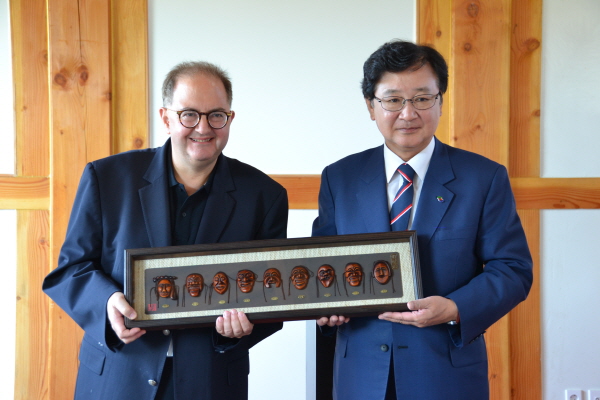
Following the luncheon, the ambassadors and other visiting diplomats and family members were led to a tour of the traditional Korean village of Hahoe Village.
The Village was home to the descendants of the Ryu Clan of Pungsan and is well-known for its traditional houses. Birthplace of renowned scholars of the Joseon Period such as Gyeomam Ryu Un-ryong and Seoae Ryu Seong-ryong, the village became even more famous after Queen Elizabeth of England visited on April 21, 1999.
Hahoe Village (“Village Enveloped by Water”) gets its name from Nakdong River, which flows around the town’s perimeter. The village is located at the foothills of Hwasan Mountain, an offshoot of Taebaek Mountain that rises up to the east. The center of the village is populated by large tile-roofed houses belonging to the Ryu clan, adding their own unique charm to the surrounding thatched roofs.

Hahoe Village boasts exquisite scenic sights: the elegant Nakdong River flowing around the village, the magnificent Buyongdae Cliff, endlessly unfolding sandy beaches, and lush, ancient pine trees. Visitors can take the boat to Buyongdae Cliff for a panoramic view of the village.
Hahoe Village, along with Yangdong Village in Gyeongju, was added to the UNESCO World Heritage List under the category of “Historic Villages in Korea” on July 31, 2010.
The visiting ambassadors and diplomats then watched the Hahoe Byeolsin-gut Shaman Rite, which consisted of a total of 11 different episodes, including the Nobleman Episode, the Apostate Monk Episode, the Old Woman Episode, the Corrupt Monk Episode, the Aristocrat and the Scholar Episode, and the Wedding Episode. (See description of each episode toward the end of this article.)
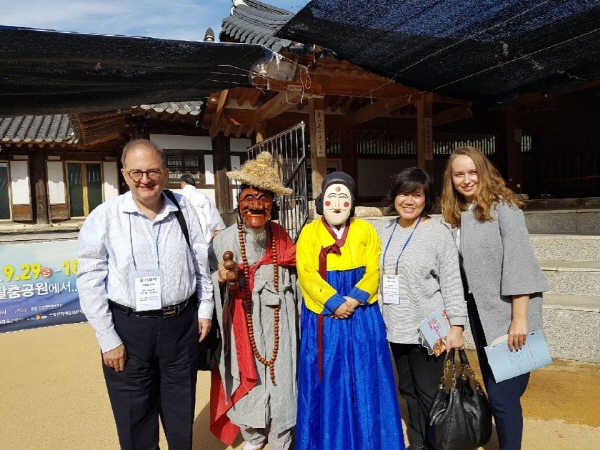
Following the shaman right, the visiting members of the Diplomatic Corps were invited to a dinner hosted by Mayor Kweon, which was attended by the leaders of the Andong City and other invited Korean guests from within the region and the Seoul City as well as the ambassadors other members of the Seoul Diplomatic Corps.
The visiting diplomats then attended the opening ceremony of the Festival at the Andong Talchun Park, which was attended by an estimated total of over 10 thousand people from all walks of life as well as representatives of a dozen countries of the world and the city officials and civic figures.
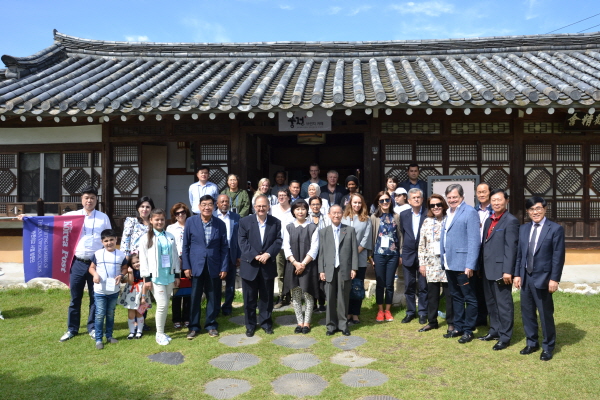
After the opening ceremony, the visiting members of the Diplomatic Corps were invited to cross the dimly illuminated Wollyeonggyo Bridge (Moon Reflection Bridge) over the Nakdong River that cut through the Andong City, including the venue of the Festival, before they checked in at the plush, well-furnished Andong Grand Hotel.
On Day 2, the visiting members of the Diplomatic Corps were led on a tour of the Confucian Culture Museum.
Attracting the attention of the visiting remembers of the Diplomatic Corps during the tour was mask dance drama, especially Malddugi in the satirical drama dance.

The character of Malddugi is one of the most salient characters in the Korean mask dance. As the representative of the downtrodden and the common folk, Malddugi’s audacity serves as an outlet for the pent-up frustrations of the common folk, while its biting humor and moves captivate the audience. Malddugi is also one of the few characters playing multiple roles in the Korean mask dance.
As the representative of the ‘Homo Festivus’ in the Korean mask dance, Malddugi leads the expression of passion in the site of the festivity, using powerful movements to bring forward the repressed emotions in the audience. Through the act of ‘hiding’ beneath the mask, it attains freedom; through the act of ‘expressing’ by means of the mask dance, it expresses its passion for play.
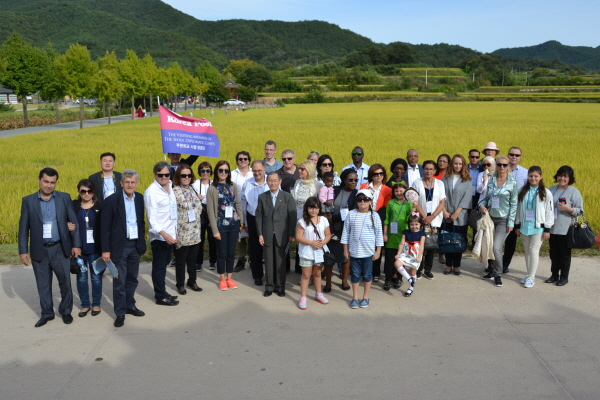
The 2017 Andong Mask Dance Festival appears to have sought to bring alive the movements, mask, and wits of Malddugi in today’s time. Through the festivities led by the figure of Malddugi, visitors had a chance to reach into the depths of their mind and reconnect with the instinctive passion of Malddugi.
The twelve masks of the Hahoe Tal represent the characters needed to perform all the roles in the Hahoe Byeolsin Gut. Of the twelve original masks, nine remain and are counted among the national treasures of Korea. Each mask has a unique set of design characteristics to portray the full range needed in the representation of these stock characters. They are:
Juji (winged lions):
These masks represent two Buddhist winged lions, which act as protectors from evil during the ritual performance. They are long ovals adorned with feathers and often painted red. They are not worn over the face, but held in the hands of the performers.
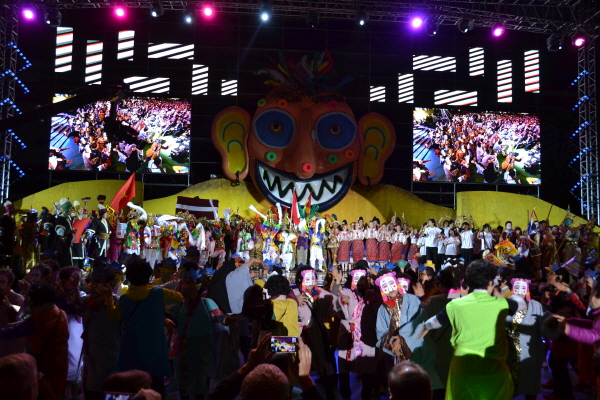
Gaksi (young woman/bride):
This mask represents a goddess in the first play of the cycle and a young bride in later episodes. This mask has a closed mouth and closed downward lowered eyes, indicating that she is both shy and quiet. Her eyes are not symmetrical, and the mask is carved and painted to have long black hair. The mask is constructed from one solid piece of wood.
Jung (Buddhist monk):
Monks held a great deal of power and influence, and were therefore susceptible to corruption, greed and mockery from the lower classes. Chung is therefore portrayed as a lecherous and gluttonous character in the plays. The mouth of the mask is a separate piece from the top and attached with cords, allowing for movement to represent laughter. The eyes are narrow, and there is a small horn-like bump on the forehead. The mask is often painted red to represent middle-age.
Yangban (aristocrat):
The character with the most power, and therefore the object of extreme mockery in the plays. The eyes are painted closed, with deep dark eyebrows and wrinkles surrounding them. The chin is a separate piece from the top of the mask, and the actors can lean forward and back to make the mask smile or frown as needed.
Choraengi (aristocrat's servant):
The wise fool, this character mocks and ridicules his master, providing much of the comedy for the plays. He has a crooked mouth with his sharp teeth showing and bulging eyes set in a deep socket with a solid dark eyebrow. The expression of the mask shows stubbornness, anger and a mischievous and meddling nature.

Seonbi (teacher/scholar):
Another character holding high social status, the mask has flared nostrils and sharply defined cheekbones to show an air of disapproval, conceit and disdain. The mask is wider at the top, coming almost to a point at the chin to represent and mock the large brain of the know-it-all scholar. The mask has a separate jaw attached with a chord or string.
Imae (the scholar's servant):
This character is portrayed as a jolly fool, with a drooping eyes to express foolishness and naivety. The forehead and cheeks are slanted and there are many wrinkles around the entire face and eyes. It is the only mask without a chin.
Bune (the concubine):
Bune is a forward and sexual character, appearing in the plays as the concubine of either the scholar or the aristocrat. The mask is symmetrical and made of one solid piece of wood. She has a very small mouth with red rouged lips, cheeks and forehead. Her eyes are closed and she has a general look of happiness and good-humor. The mask is constructed with black hair painted on the top of her head and 2 cords/strings hanging from the sides of the mask.
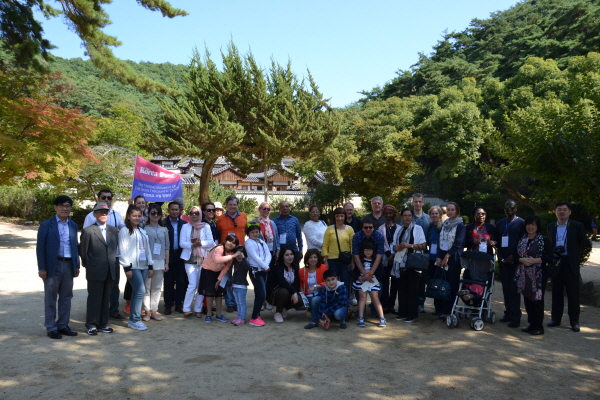
Baekjeong (butcher):
The mask has narrow eyes and a separate jaw, allowing the mask to have an evil grin when the actor leaned forward, and appear to be in maniacal laughter when leaning back. The hair and eyebrows are painted black and the mask is covered with wrinkles. The brow is slanted to represent an ill-tempered nature.
Halmi (old woman):
The mask has wide round eyes and an open mouth, both surrounded by wrinkles. The forehead and chin are both pointed to represent a character without the blessings of heaven above or the promise of good fortune later in life. The mask is one solid piece of wood.
Opening address of Mayor Kweon Young-Sae of Andong City:
To all esteemed 500,000 citizens of Dandong, to our distinguished guests and visitors.
On this beautiful season of harvest, I am pleased to announce the opening of the Dandong Mask dance Festival 2017 and the 46th Dandong Folk Festival.
Firstly, I would like to thank the Chairman Kyung-won Lee of the Andong Festival Tourism Foundation, Director Jae-chun Lee of the Andong Cultural Center, and the experts, artists, and citizens who contributed in bringing this day into reality.
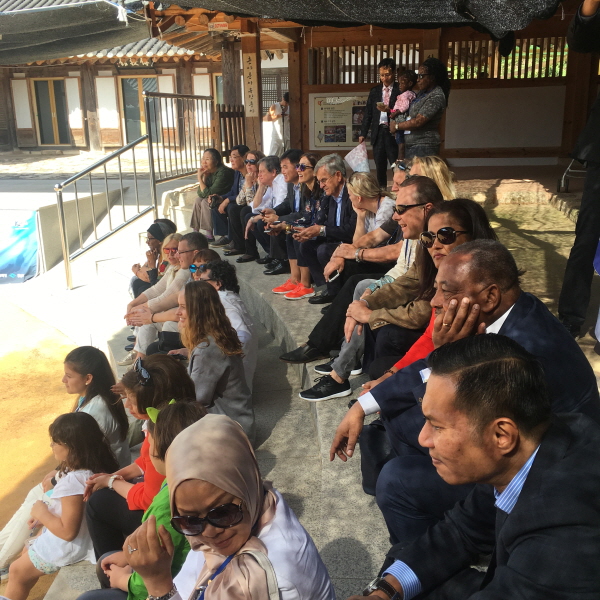
I would also like to thank Governor Kwan-yong Kim of North Gyeongsang Province, assemblyman Gwang-rim Kim, and Chairman Seong-jin Kim of the Andong City Council for their generous support in building this international festival.
After the rite of passage that was the 20th anniversary of the Mask Dance Festival, we have endeavored to bring a more mature and distinguished program for this year. Under the theme of ‘Wish of Homo Festivus’, this year’s Festival aims to bring out the true Homo Festivus within us to express its instinctive search for joy in an explosive series of emotions at the edge of normality and strangeness, at the edge of reason and emotion.
We are honored to count the distinguished guests from Latvia, Sri Lanka, Malaysia, China, Japan, Thailand, Bulgaria, the first-time guest Bolivia, and 12 other nations in this year’s festival. This year being the 60th anniversary of diplomatic relations between Turkey and South Korea, we pledge to offer our robust efforts in promoting cultural exchange with our brothers in Turkey through the ‘Turkish Culture Day’.
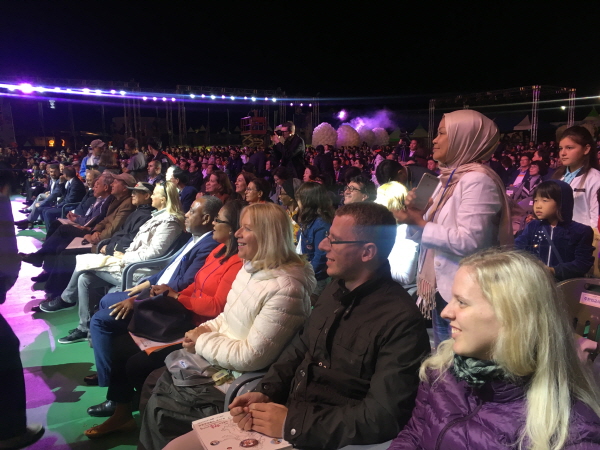
Like the popular TV program ‘King of Mask Singer’. We look forward to the masked expression of talent and skills from all over Korean in the Cultural Street, Okdong, traditional markets, and others throughout Andong with busking performances.
Our highlight of the event, Maskdance Daedong-Nanjang, returns without the parade element to this stage. We encourage you to let go of your inhibitions and focus on the primal dance and shouts against the backdrop of the powerful EDM and robust special effects.
Our special festival dance and music, developed through the Regional Culture Consulting Support Project of the Ministry of Culture, Sports and Tourism, offers a simple yet fun activity for all visitors.
The Andong Folk Festival offers nearly 30 varieties of Andong’s traditional plays. With the highlight including the men’s play, Chajeon Nori, and the women’s play, Notdari Balpgi.
We offer our heartfelt thanks once again to the staff members and artists of Andong, who have worked tirelessly and passionately to bring this festival into reality, as well as the civic groups, businessmen, and volunteers of the region.
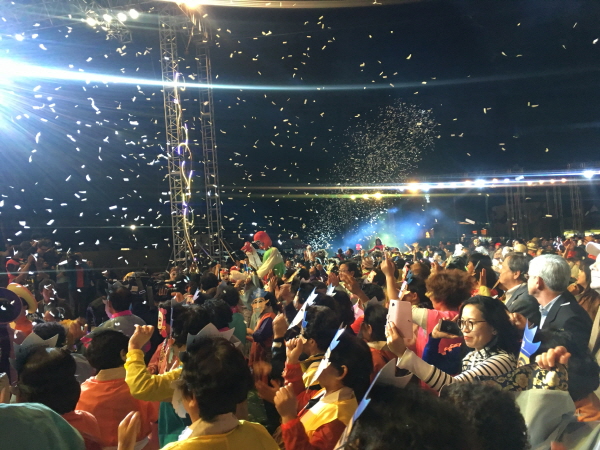
The Festival has begun. Let us leave our concerns and worldly matters at the doorstep, and find new energy and vitality through the masks and dances of the next 10 days. Thank you.
Welcome speech of Mayor Kweon at luncheon for the SDC members:
My heart-felt, warm welcome to the Excellencies and Madams, who have taken their very precious time out to do grace us to our Andong Mask Dance Festival.
Masks are the invaluable cultural assets of mankind as well as the Korean people covering their history and culture.
We at the Andong City wish to share the common features of our culture with those of the different countries around the world through the medium of masks with a view to contributing to the promotion of peace and common prosperity between Korea and the all the countries of the world.
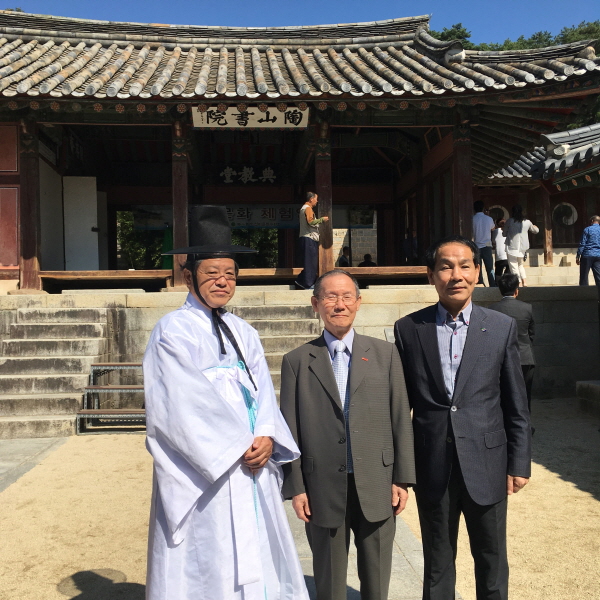
With this in mind we have and are hosting the Andong Mask Dance Festival today.
Excellencies and Madams, it is our hope that you will all kindly oblige us with disseminating the Andong Mask Culture when you return to your country after your tour of duty in Korea.
The visit of Your Excellencies and Madams is only for two days, which is a rather short time. I hope that next time our distinguished guests visit Andong again it would be a time when you all can experience much more than at this time.
Once again, I would like to extend my warmest gratitude to all the distinguished guests here for their kind visit to our Andong city.
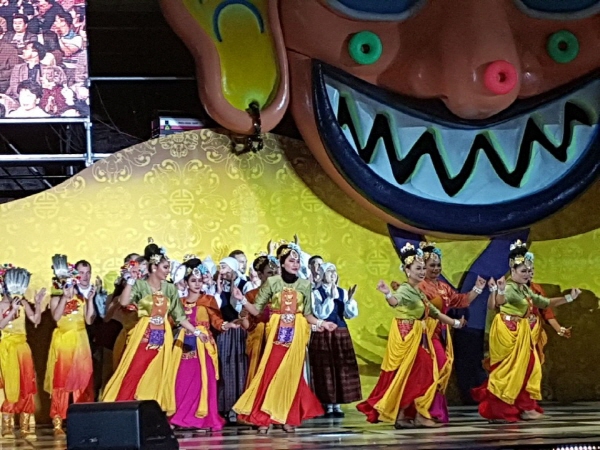
Participating members of the Seoul Diplomatic Corps:
Ambassadors Petar Andonov of Bulgaria, Milan Lajciak of Slovakia, Gonzalo Ortiz of Spain, Luis Fernando de Andrade Serra of Brazil and Mihai Ciompec of Romania (many accompanied by madams); Mrs. Sarah bile (spouse of the ambassador of Cote d'Ivoire) and Mrs. Lan-Hinh Tran (spouse of the ambassador of Viet Nam); Deputy Head of Mission (DPM) Shaharuddin Onn of Malaysia; Counsellors Gabriel da Silva Guimarães of Angola and Begench Durdiyev of Turkmenista; First Secretary Andres Giraldo of Colombia; Third Secretary Mrs. Alice Lieto of Zambia; Culture-Tourism Attache Kouassi Catherine of Cote d'Ivoire; Mrs. Tursunova Kamola (spouse of the DPM of Uzbekistan); and Mrs. Kurbanova Dilnoza (spouse of the secretary of Uzbekistan).

